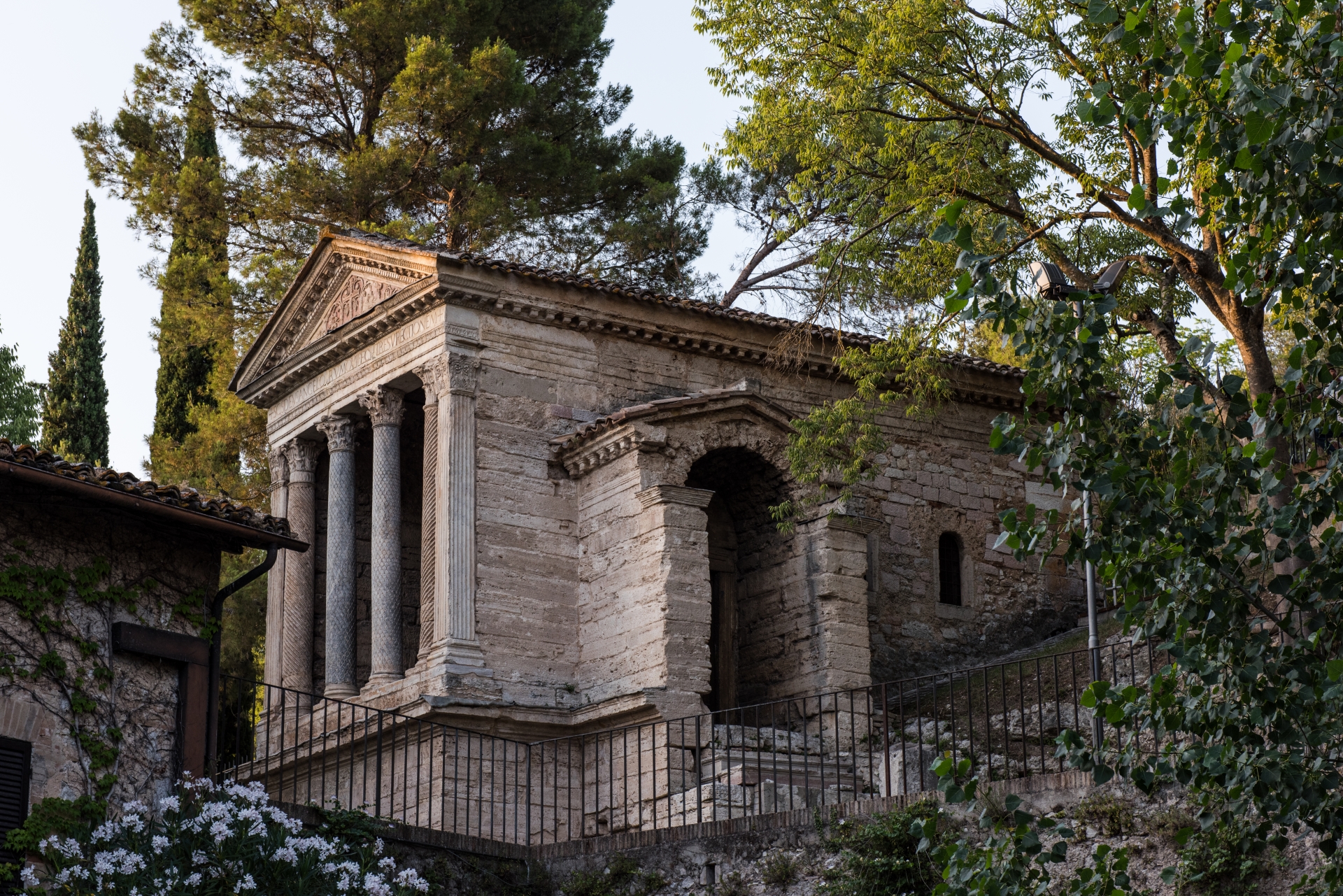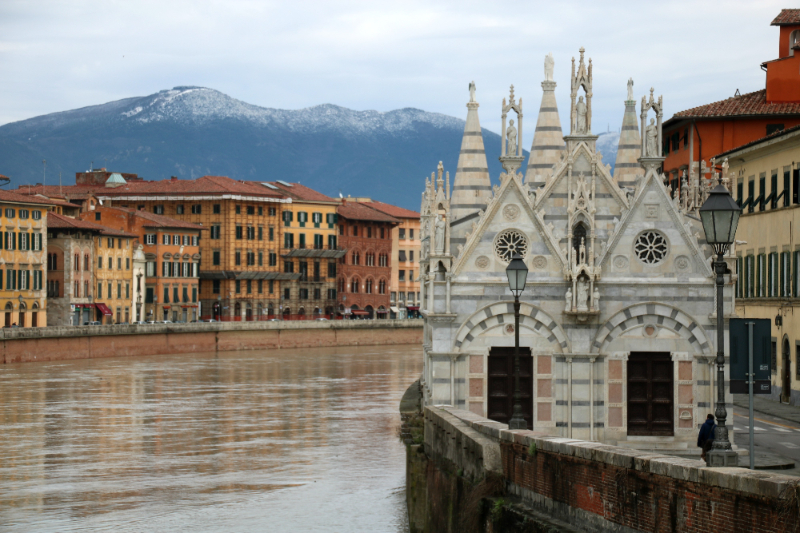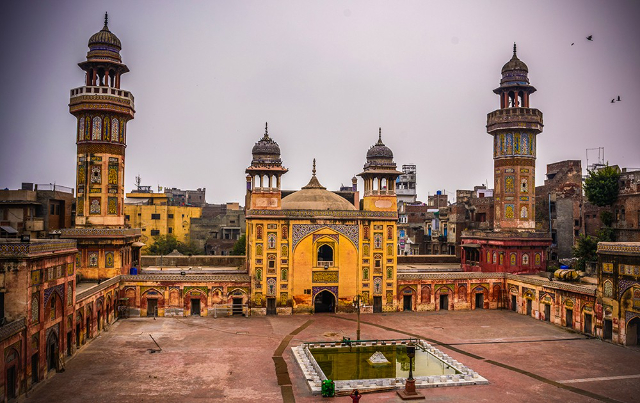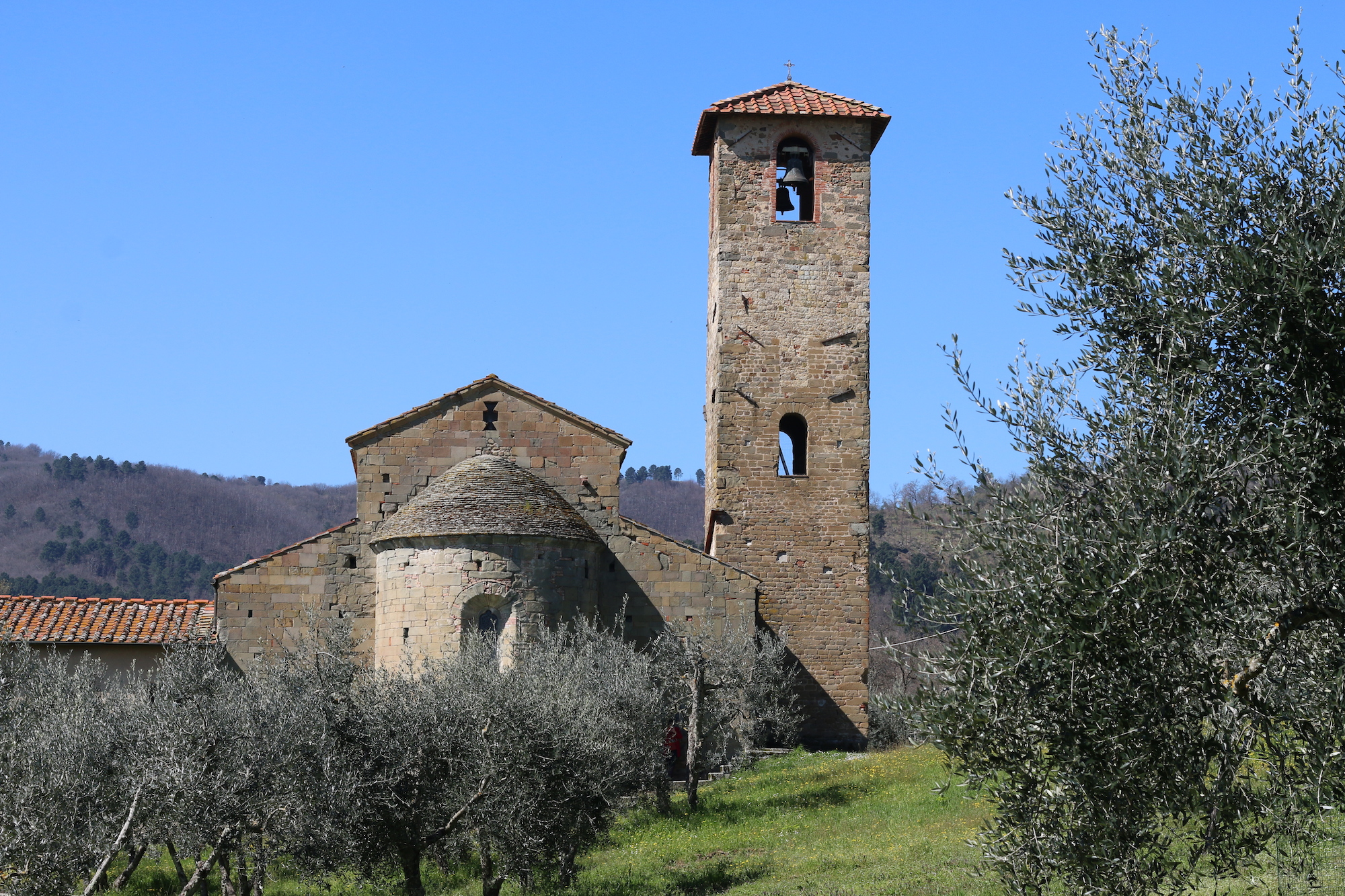The Tempietto del Clitunno is an elegant early-Christian building dedicated to S. Salvatore which is found at the foot of Campello sul Clitunno. Some believe it was built in the 4th century or at the beginning of the 5th, whilst others believe it was between the 7th-9th centuries. It uses architectural elements from pagan shrines as recalled by Pliny the Younger, which were found in the nearby springs at the source of the river. Unlike other works of Longobard origin, the majority of the sculpted elements are original and not elements from the Roman age that have been re-used.
The building, located on top of a overlooking the Clitunno, has the shape of an "in antis" temple with four columns (flanked by two square pillars at either side with two leaf columns at the centre) at its front, over which is a tympanum. The temple was reached via two side stairways which ended under two small prothyra. The frieze on the façade carries an inscription dedicated to the God of Angels, whilst the two side ones, now lost, recall the God of Prophets and Apostles;The Tempietto sul Clitunno became famous in Renaissance times, when it inspired artists like Francesco di Giorgio Martini, Benozzo Gozzoli, Palladio and Vanvitelli and was later cited by Lord Byron in his work "Childe Harold’s Pilgrimage".













